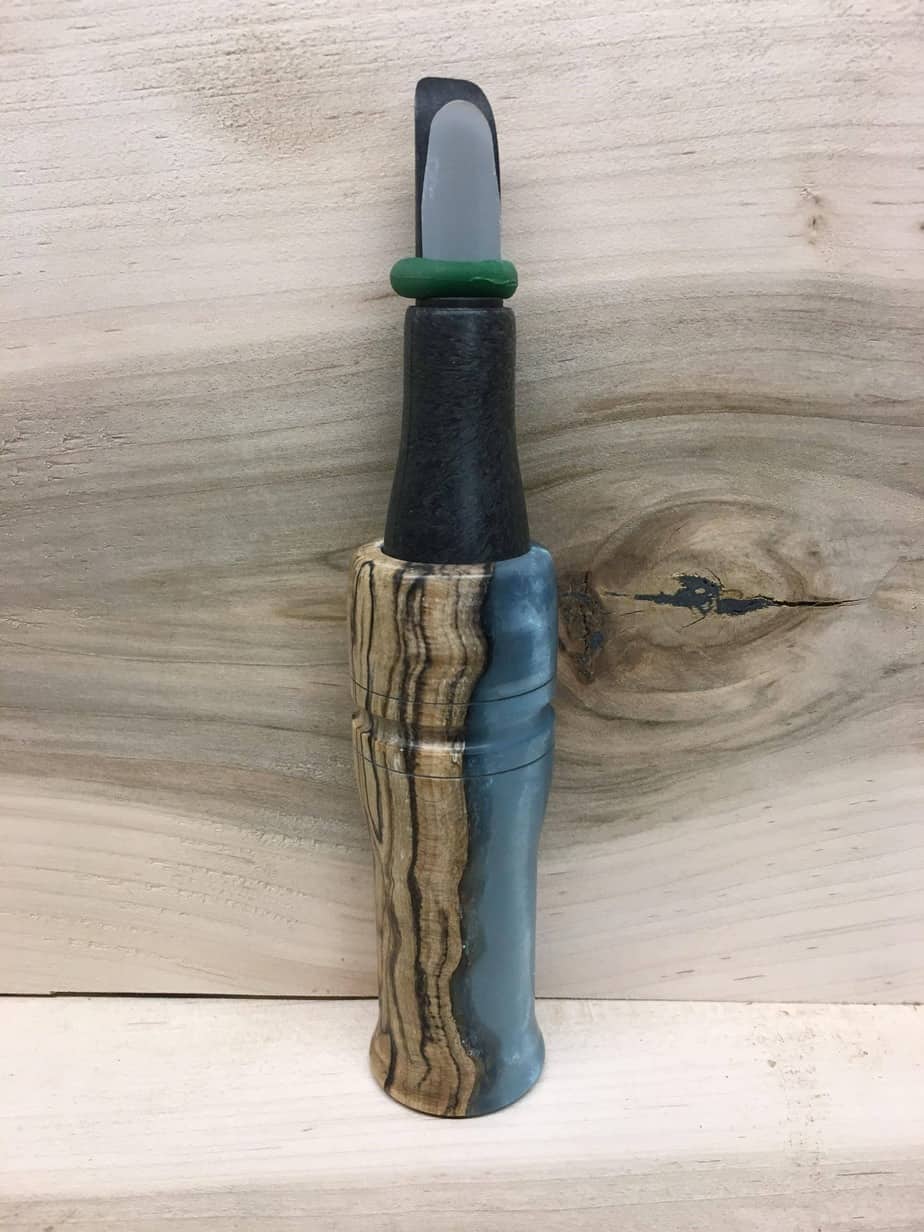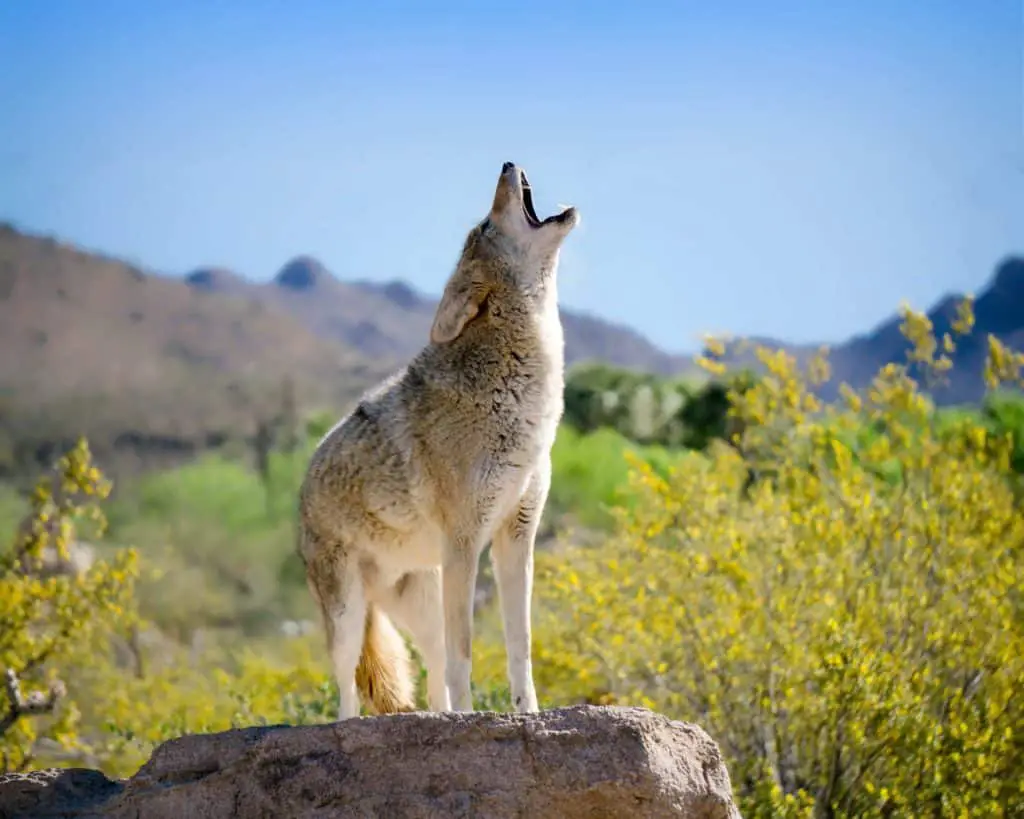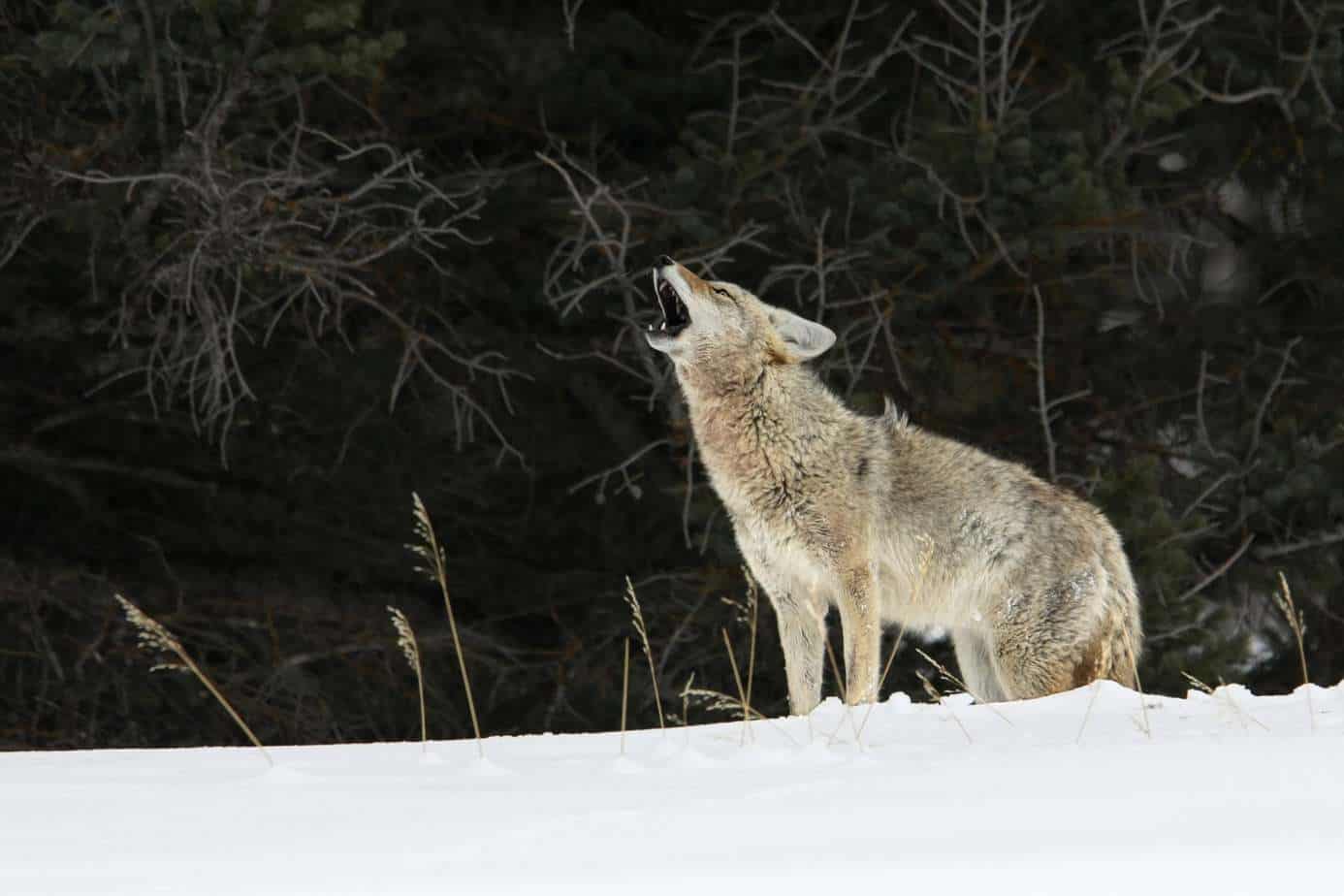Open reed coyote calls have unrivaled range and volume, they can bring a coyote in from two miles away, and their lifelike sounds can convince the most reluctant coyote to get a little closer.
So, why is your open reed coyote caller gathering dust on a shelf?

Stage fright: Why you don’t use open reed coyote calls.
Predator hunting, especially coyote hunting, is done in some of the remotest, least populated areas. Far from the lights and sounds of the city, hundreds of yards from the nearest road, and often on the darkest nights, long after everyone else is fast asleep.
And yet, as you reach for your open reed caller, you imagine hordes of other predator hunters are gathered around you, waiting to judge the quality of your call. You wonder if, inside that distant farmhouse three miles behind you, someone is listening.
It’s called “Stage Fright.” It’s just your imagination playing tricks on you. Unfortunately, stage fright stops more predator hunters than blizzards do. Fortunately, there are two quick steps to conquer it.
Step 1: Watch a pro use open reed coyote calls.
We asked Brian Rush of https://rushcustomcallers.com/ to give us a quick lesson on using the open reed coyote caller. You may remember him from the class he taught on How-to-master-the-best-closed-reed-coyote-call/.
He had a busted shoulder when we caught him this time, but he quickly put together a tutorial using a recent hunt. Watch how he uses one quick call to stop and drop two coyotes on a New York farm.
In this video, Brian is using his: Open reed coyote howler.
Step 2: Learn these three easy coyote calls.
Brian Rush is more than a professional predator caller and call manufacturer; he’s a coyote hunting master—he and his nocturnal partner in crime, Andy DelliVeneri (from https://downwindoutdoors.com/), took 100 eastern coyotes last year alone. We asked him to spill his secrets to such great success (and may have applied some pressure to that sore shoulder).
Here’s Brian teaching us his three favorite calls. They are all easy to learn and very productive calls.
The best time to use open reed coyote calls?
Brian’s just had major surgery. He’s in pain and somewhat immobile. So now is our chance to score some of his secrets. First, we asked him when specifically to use his open reed coyote call. Here’s what he told us.
“Use coyote vocalization at night,” Brian told us.
During the day he mostly uses his Closed Reed Rabbit Squealer. But at night, Brian prefers to use open reed coyote calls to bring in more coyotes in a week than most of us see all year.
What are Brian Rush’s favorite coyote calls?
Brian has a few ground rules for coyote hunting success; rabbit-tat, knowing the topography, and getting permission to hunt as much land as possible.
Author’s note: We’ll do a future article on all his secret methods (preferably when he is bed-ridden and on truth-telling pain killers) later, but for now, focus on meeting those three.
As for his three favorite open reed coyote calls, he was willing to talk extensively about them.
Invitational howls
Brian likes to start most of his calling sessions with a feminine (non-threatening) invitational howl. He told us he almost always begins with this call.
Brian explained, “Coyotes are rude. They don’t answer each other right away. They will wait several minutes before responding.” As a result, he will make one invitational howl and then wait as long as five minutes before calling again.
KiYi
For his second call, Brian likes to use the distress or excited yipping represented by the KiYi call. “Put a lot of emotion in it,” he recommends. This sound mimics the yelps of an injured coyote, triggering a parental response that can quickly bring a coyote into range.
The KiYi is also the perfect call to use if you get busted while moving to your stand and immediately after taking your shot.
Challenge Barks.
If the coyotes are vocally responding but will not break cover, Brian uses a more aggressive series of calls to lure them out. The challenge bark is his last-ditch effort to get a coyote 200-300 yards away to come close enough for the shot.
When he calls challenge barks, it’s always in as rude a manner as possible. “Never let the coyote finish his sentence. Cut him off and bark right back at him. Mimic him a much as possible.” This will infuriate a reluctant coyote. As a result, he’ll come charging forward to confront his antagonizer.

When are you ready to use open reed coyote calls?
Brian recommends using windshield time (while driving alone) to practice his three favorite open reed coyote calls as much as possible.
But when you can comfortably hold the caller, feel the air hit your wrists, and focus that air thru the caller—you’ve learned how to master the tone. Everything from there is a matter of repetition, repetition.
The moment you can make the call without any hesitation, you are ready to use it afield.
Wait 15 minutes, or use open reed coyote calls immediately?
Brian Rush doesn’t wait 15 minutes after arriving at his stands to start calling. Now, not waiting is a sin if you believe everything https://thepredatorhunter.com/ tells you, but Brian disagrees.
Brian explains, “I’ve learned a lot about the dynamics of coyote hunting behavior over the years. My mind has been blown away by how much I can get away with.”
Brian has routinely spotted coyotes in a field with a monocular, parked his truck, worked his way past the improved portion of the road (legal shooting area), and then stood watching these coyotes.
“These coyotes are busy,” he says. “They are coyotes doing coyote things. They aren’t interested in human activities.” So, he starts calling right away, carefully studying the coyote’s body language during his calls. “Sometimes they hear me and try and use the wind, sometimes they run off, but often, they come to the calls I make.”
Brian’s videos tell the tale. Fifteen minutes after I arrive on the stand, I have just started calling. By then, Brian is dragging his trophy-sized coyotes back to his truck.

Ready to try open reed coyote calls?
An open reed coyote caller can help you paint any picture you like, instantly change to a different sound if the situation warrants, or stop a coyote on a dime.
Grab one of Brian’s Open Reed Coyote Howlers here, give it a little practice, and learn Brian’s three favorite open reed coyote calls. Then, please leave us a note and tell us how you did.


